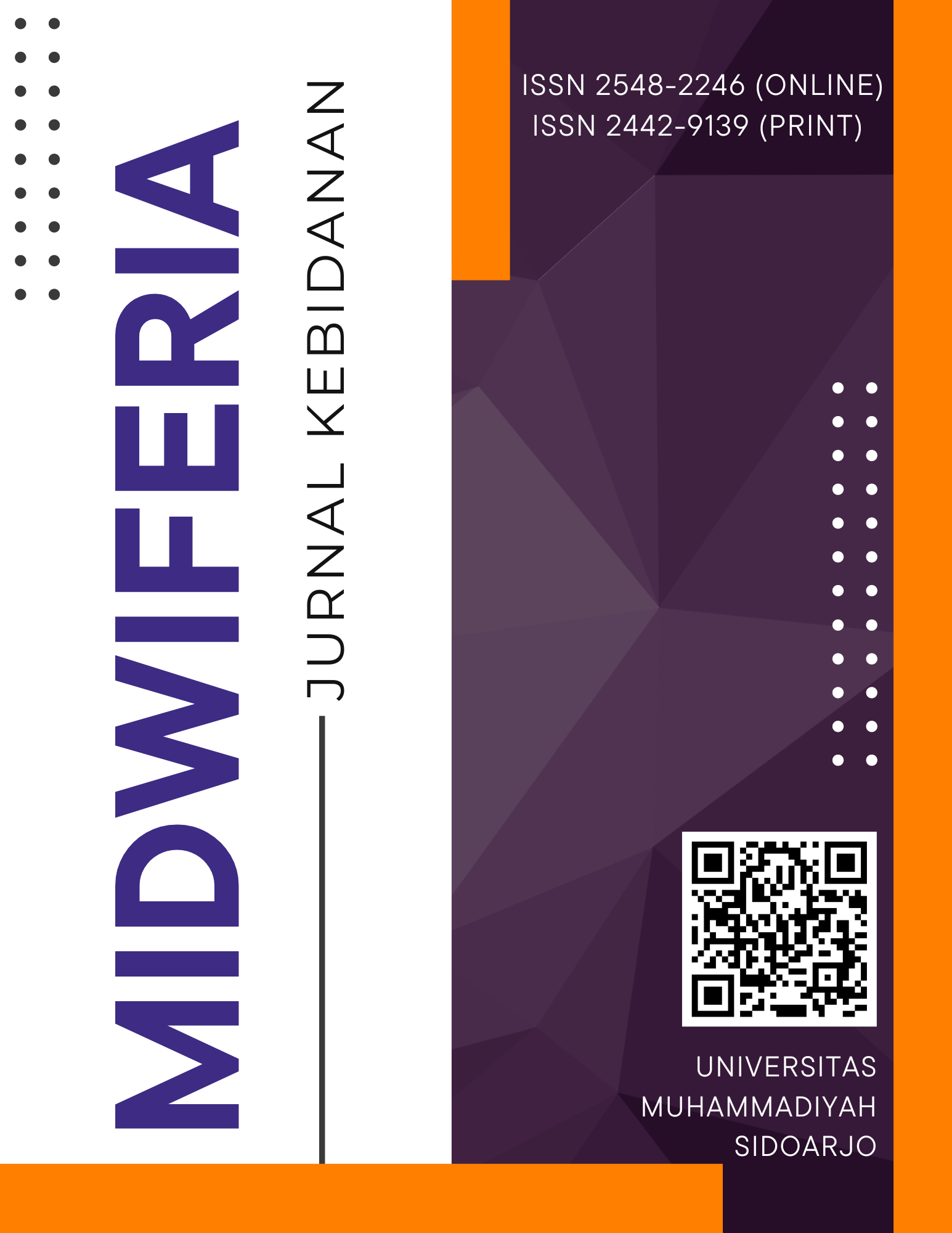GAMBARAN LAMA PENGGUNAAN KB SUNTIK PROGESTIN DENGAN KEJADIAN AMENORRHEA SEKUNDER DI DUSUN KARANGLO DESA DRIYOREJO GRESIK
DESCRIPTION OF THE LONG USE OF PROGESTIN INJECTING KB WITH SECONDARY AMENORRHEA EVENT IN KARANGLO hamlet, DRIYOREJO VILLAGE, GRESIK
DOI:
https://doi.org/10.21070/mid.v1i1.344Keywords:
KB suntik progestin, lama penggunaan, amenorrhea sekunderAbstract
Injectable contraceptive is a contraceptive method with many side effects, hormonal injectables have away of working systemically in the body, causing systemic side effects on the body as well. Based on the results of the BKKBN and PLKB(Field Extension Family Planning) Driyorejo’s village injectables users is quite high compared to other contraceptives. The purpose of this studyw as to determine the old picture with the use of progestin injectables incidence of secondary amenorrhea.
The design of this research is descriptive method. The study population was all acceptors progestin’s injection in the hamlet of Karanglo Driyorejo’s village-Gresik of 18 acceptors.The entire population can be the subject of research. Data were collected byi nterview using the interview guidelines.
The results of this study indicate that the majority of acceptors progestin injectables using progestin injectables for > 1 year by 80 %. The majority of acceptors progestin injectables contraception experiencing secondary amenorrhea by 75 %. Most of the acceptors were using progestin injectables ≤ 1 year of amenorrhea is not having by 100 %
Conclusion research that most acceptors progestin injectables > 1 year experience secondary amenorrhea. It is recommended that the ministry, in particular midwives improve counseling and information to each acceptor progestin injectables especially about the possible side effects so there is no misunderstanding between service providers and service recipients.
References
Hanafi H. 2002. Keluarga Berencana dan Kontrasepsi.Jakarta : Pustaka SinarHarapan. Hanafi. 2004. Macam-Macam Metode KB. Jakarta : EGC.
Notoatmodjo, S. 2007. Promosi Kesehatan dan Ilmu Perilaku.Jakarta :Rineka Cipta.
Notoatmodjo, S. 2010. Promosi Kesehatan Teori dan Aplikasinya.Jakarta : Rineka Cipta.
Soekir S, Baharudin M, Affandi B, Saifuddin B.A. 2006. Buku Panduan Praktis Pelayanan Kontrasepsi. Jakarta : Yayasan Bina Pustaka
Sarwono Prawirohardjo. Sulistyawati. 2012. Tujuan KB. Jakarta : EGC
Manuaba, I.A.C. 2004.Ilmu penyakit kandungan dan KB untuk pendidikan bidan.Jakarta : EGC
Notoatmodjo. 2005. Metodologi penelitian kesehatan. Jakarta : PT Rineka Citra.
Nursalam. 2008. Konsep dan penerapan metodologi ilmu keperawatan. Jakarta : Medika Salemba. Faktor-Faktor yang Mempengaruhi Penggunaan Kontrasepsi. Bersumber dari :http://www.BKKBN.go.id. [ diakses2 Juni 2014 ]
Saifuddin,A.B. 2006. Buku acuan nasional pelayanan kesehatan maternal dan neonatal.Jakarta : Depkes RI Pusat Pendidikan Tenaga Kesehatan.
Speroff L.,Glass R.H., Kase N.G., 2007. Clinic gynecologic endocrinology and Infertility. 6th ed. Philadelphia: Lippincott williams and wilkins.
Wiknjosastro H., Saifuddin A.B., Rachimhad T. (eds). 2006. Ilmu Kebidanan. Edisi 3. Cetakan 8. Jakarta: Yayasan Bina Pustaka
Sarwono Prawirohardjo. Wiknjosastro H., Saifuddin A.B., Rachimhad T. (eds). 2005. Ilmu Kandungan. Edisi 2. Cetakan 4. Jakarta: Yayasan Bina Pustaka
Sarwono Prawirohardjo. Pendit. 2007. Ragam Metode Kontrasepsi. Jakarta : EGC. Uliyah, M. 2010. Panduan Aman dan Sehat Memilih Alat KB. Yogyakarta : BiPA
Glasier, et al. 2005. Keluarga Berencana & Kesehatan Reproduksi. Jakarta : EGC






